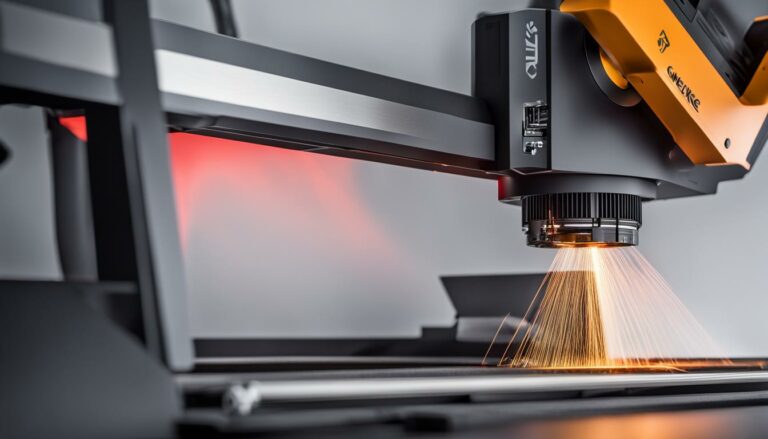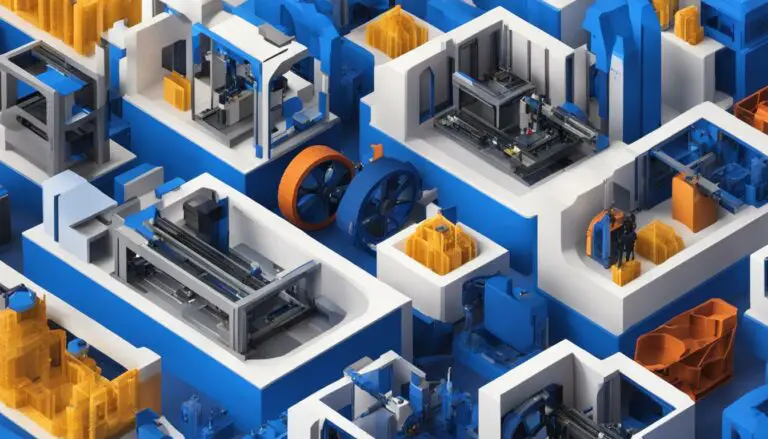Uncovering Abuse of Open Source by 3D Printer Companies
Originally posted on January 9, 2024 @ 4:46 am
There is a growing concern in the 3D printing industry about certain companies misusing open source principles. While some companies, such as Prusa Research, adhere to these principles by releasing open-source firmware and software, others are bending or violating open-source licensing rules. Some companies are even obtaining patents based on open-source development, or using open-source code in their closed systems without proper licensing. This kind of misuse of open source is troubling and can ultimately harm the sustainability and integrity of the 3D printing community.
Unethical practices by 3D printer companies that abuse open source can have detrimental effects on the entire industry. From restricting innovation to compromising the principles of collaboration and fairness, these practices undermine the progress and potential of 3D printing technology. As users and advocates of open-source principles, we must shed light on these practices and work together to find solutions.
Key Takeaways
- Abuse of open source by 3D printer companies raises ethical concerns in the industry.
- Some companies bend or violate the rules of open-source licensing.
- Applying for local patents based on open-source development is a misuse of open source.
- Using open-source code in closed systems violates open-source licenses.
- Unethical practices undermine the sustainability and integrity of the 3D printing community.
The Importance of Open Source in the 3D Printing World
Open source has revolutionized the 3D printing industry, driving innovation and enabling collaborative development. Projects like RepRap and the contributions of individuals and companies have propelled the industry forward, pushing the boundaries of what is possible with 3D printing technology.
Open source development has been instrumental in the rapid advancement of 3D printing. By sharing knowledge, designs, and software, the community has fostered a culture of collaboration and mutual support. This has led to the creation of a diverse range of 3D printers, materials, and applications.
However, the abuse of open source by certain companies poses a significant threat to the integrity of the 3D printing community. When open source principles are violated, it undermines the trust and goodwill that have been the foundation of this industry. Open source violations in 3D printing can have negative consequences that extend beyond the immediate impact on specific projects or individuals.
“Open source abuse in 3D printing can lead to a loss of trust within the community, limiting future collaboration and innovation.”
One of the consequences of open source abuse is the loss of trust within the 3D printing community. When companies exploit open source technology without giving back to the community or manipulating licenses for their own benefit, it creates a sense of betrayal among fellow innovators. This can hinder future collaboration and discourage individuals from sharing their work openly.
Furthermore, the negative impact of open source abuse extends beyond trust issues. It can restrict the potential for future innovation and advancements in 3D printing. By hoarding knowledge and limiting access to important resources, companies impede the progress of the entire industry. This not only stifles creativity but also hampers the democratization of 3D printing technology.
Ultimately, preventing open source abuse in 3D printing is crucial for the continued growth and success of the industry. By upholding the principles of open source, companies can foster a collaborative environment where innovation thrives and knowledge is freely shared. Together, we can build a future in which 3D printing continues to revolutionize various sectors and positively impact our lives.

| Consequences of Open Source Abuse in 3D Printing |
|---|
| Loss of trust within the 3D printing community |
| Limitations on future collaboration and innovation |
| Restriction of knowledge and resources |
| Impediment to the democratization of 3D printing |
The Challenges of Open Source Licensing in the 3D Printing Industry
Open-source licensing in the 3D printing industry poses unique challenges that need to be addressed to ensure a sustainable and ethical ecosystem. The standard GNU GPL license, although widely used, can be vague and complex, leading to varied interpretations by companies.
This lack of clarity often results in companies releasing limited or partial source code, only complying with the license terms when faced with community pressure. Such practices undermine the fundamental principles of open source and hinder collaboration within the industry.
To tackle the issue of open source abuse and prevent its misuse in the 3D printing industry, it is crucial for companies to prioritize open source compliance. This can be achieved by establishing clear guidelines and standards for open-source practices.
By ensuring that all stakeholders understand the importance of open source compliance and abide by licensing agreements, we can create a more transparent and trustworthy environment where innovation can thrive.
Stricter Compliance and Enforcement
To prevent open source abuse, it is imperative to enhance compliance measures and enforce licensing agreements more rigorously. Companies should proactively adopt open-source best practices, including timely and complete release of source code.
Furthermore, the industry can benefit from the development of tools and technologies that facilitate open source compliance. These tools can aid in the identification of license violations and provide support in resolving any compliance issues effectively.
Establishing Clear Guidelines and Standards
To promote open source compliance in the 3D printing industry, it is essential to establish clear guidelines and standards that companies can follow. These guidelines should address key areas such as:
- Clarity on code disclosure requirements
- Procedures for license attribution
- Compliance auditing mechanisms
By providing a framework for open-source practices, these guidelines and standards will help companies navigate the complex landscape of open-source licensing and ensure compliance with ethical and legal obligations.
Embracing Collaboration and Knowledge Sharing
Open source thrives on collaboration and knowledge sharing. Industry players should actively engage with open-source communities, contributing not only through code but also by sharing their experiences and best practices.
By fostering a culture of collaboration, we can create an environment that encourages open source compliance, promotes innovation, and drives the 3D printing industry forward.

| Guidelines | Description |
|---|---|
| Clearly define license obligations | Provide detailed guidance on the requirements for code disclosure, attribution, and redistribution. |
| Regular compliance audits | Implement a systematic process for assessing and ensuring compliance with open-source licenses. |
| Collaboration with open-source communities | Engage with open-source communities and contribute back to the ecosystem through code and knowledge sharing. |
| Education and awareness programs | Develop training initiatives to educate employees and stakeholders on open source compliance best practices. |
The Potential Impact on Intellectual Property and Patenting
The abuse of open source in the 3D printing industry raises concerns about intellectual property rights and patent infringement. Companies that misuse open-source innovations may violate existing patents or apply for local patents based on open-source development. This can lead to a loss of control over intellectual property and limit the ability of innovators to protect their inventions. The emergence of 3D printing technology also presents challenges for patent offices and regulators in determining the scope and validity of 3D printing-related patents.

Companies that abuse open source in the 3D printing industry not only violate the principles of collaboration but also pose a threat to intellectual property rights. By misusing open-source innovations, these companies may infringe on existing patents or attempt to patent open-source developments under their own name. This infringement not only undermines the rights of innovators but also disrupts the balance of intellectual property protection.
Furthermore, the misuse of open source can lead to a loss of control over intellectual property. When companies adopt open-source innovations without adhering to proper licensing and attribution requirements, they risk diluting their own intellectual property rights and making it more challenging to protect their inventions. This can have a significant impact on the ability of innovators to monetize their ideas and maintain a competitive advantage in the market.
3D printing technology adds further complexity to intellectual property and patenting. The unique capabilities of 3D printing, such as the ability to replicate physical objects and create complex designs, raise questions about the scope and validity of patents. Patent offices and regulators must grapple with issues like the patentability of 3D printed designs and the infringement of existing patented designs.
It is crucial for the 3D printing industry to address open source infringement and establish clear guidelines for responsible use. By ensuring compliance with open-source licensing agreements and promoting ethical practices, we can protect intellectual property rights while fostering innovation and collaboration within the industry.
The Legal and Regulatory Implications of 3D Printing
The widespread adoption of 3D printing technology has significant legal and regulatory implications across various industries. As 3D printing becomes more democratized, it brings about challenges concerning product safety, liability, and regulatory compliance. Government regulators in sectors such as healthcare, aerospace, and consumer products are now faced with the responsibility of approving and monitoring 3D printed products to ensure they meet industry standards and regulations.
One of the key considerations in the legal implications of 3D printing is product safety. As individuals gain the ability to create their own products using 3D printers, there arises a need for regulations that uphold safety standards. Ensuring that these products do not pose any potential harm to consumers is crucial.
“Product safety is of paramount importance as the 3D printing industry expands. We need to establish guidelines and standards that address potential risks and ensure the safety of end-users.”
Liability is another area that requires attention in the legal and regulatory landscape of 3D printing. With traditional manufacturing processes, liability often falls on the manufacturer of the product. However, in the case of 3D printing, where individuals can print their own products, determining liability becomes more complex. It is essential for the legal framework to adapt and address these challenges.
The legal implications of 3D printing also extend to areas such as taxation, export control, and intellectual property enforcement. Taxation policies may need to be developed or revised to account for the unique nature of 3D printed products. Export control regulations may have to be updated to ensure the responsible use and distribution of 3D printing technology. Intellectual property rights and enforcement become especially crucial as 3D printing enables the reproduction of patented designs and intellectual property.
“The legal and regulatory landscape will need to adapt to address these challenges and ensure the responsible and ethical use of 3D printing technology.”
| Industry | Legal and Regulatory Implications |
|---|---|
| Healthcare | Regulation of 3D printed medical devices and prosthetics, ensuring safety and efficacy |
| Aerospace | Regulation of 3D printed components and materials for aircraft manufacturing, ensuring compliance with industry safety standards |
| Consumer Products | Product safety regulations for 3D printed consumer goods, protecting consumers from potential hazards |
It is evident that the legal and regulatory landscape surrounding 3D printing is complex and ever-evolving. As the technology continues to advance and become more accessible, stakeholders must work together to develop robust frameworks that address the challenges and ensure the responsible and ethical use of 3D printing technology.

Next Section: The Potential for 3D Printing and Control
The Potential for 3D Printing and Control
3D printing has revolutionized the manufacturing industry by offering a decentralized and customizable approach to production. As personal and industrial 3D printers continue to advance, the potential for 3D printing away from control becomes a key consideration. However, with this potential comes a range of risks and implications that we must address.
The Risks of 3D Printing Away from Control
When 3D printing moves away from control, it raises concerns about illegal activities and the challenges of identification and enforcement. The ability to create objects with ease and privacy opens the door to the production of counterfeit goods, unauthorized replicas, and even dangerous items.
As the potential for 3D printing away from control grows, we face the challenge of balancing innovation and security in a rapidly evolving landscape. The risks associated with uncontrolled 3D printing cannot be ignored, and proactive measures must be taken to mitigate these risks.
Implications of Widespread 3D Printing Away from Control
The widespread adoption of 3D printing away from control can have significant implications across various industries. Sectors such as aerospace, automotive, healthcare, and consumer products may face disruptions from unregulated production. The absence of control mechanisms can lead to compromised quality and safety standards, potentially putting consumers at risk.
Moreover, the implications extend beyond industry concerns. Law enforcement, investigation, and the criminal justice systems will also need to adapt to address new types of crimes facilitated by 3D printing technology. Current laws, regulations, and enforcement mechanisms may prove ineffective or insufficient in the face of these emerging challenges.
Adapting to the Future
To navigate the potential risks and implications of 3D printing away from control, stakeholders in the industry must come together to establish guidelines and standards. Collaborative efforts between manufacturers, regulators, and legal experts are crucial to develop effective strategies that balance innovation and security.
Furthermore, advancements in technology, such as digital rights management systems and blockchain solutions, may play a role in ensuring traceability and control in the realm of 3D printing. Robust identification methods and secure platforms can help maintain accountability and protect intellectual property rights.
By proactively addressing the challenges posed by 3D printing away from control, we can unlock the full potential of this disruptive technology while safeguarding the interests of industries and society as a whole.
,
,
Conclusion
The abuse of open source by certain 3D printer companies raises ethical concerns and jeopardizes the collaborative spirit of the 3D printing community. To prevent further abuse, it is crucial for industry stakeholders to enforce compliance with open-source licensing agreements and establish clear guidelines for open-source practices.
Regulators and legal systems must also adapt to the unique challenges posed by 3D printing. By ensuring the responsible use of this technology and addressing potential risks, we can create an environment that nurtures innovation while safeguarding the interests of all stakeholders.
Looking ahead, the future of open source in the 3D printing industry holds immense potential. By actively addressing the abuse of open source, we can pave the way for a more sustainable and collaborative future. As industry players work together to foster compliance and establish best practices, open source will continue to thrive, unleashing its full potential and benefiting the entire 3D printing community.
FAQ
What is open source abuse in the 3D printing industry?
Open source abuse in the 3D printing industry refers to the unethical practices of certain companies that misuse or violate the principles of open-source licensing. This can include applying for local patents based on open-source development or using open-source code in closed systems without complying with the licensing requirements.
What are the negative consequences of open source abuse in 3D printing?
Open source abuse in 3D printing can have several negative consequences. It can lead to a loss of trust within the 3D printing community, hinder future innovation, and undermine the principles of community collaboration and mutual respect. It can also raise concerns about intellectual property rights and patent infringement.
How can open source abuse be prevented in the 3D printer industry?
To prevent open source abuse in the 3D printer industry, it is important to enforce compliance with open-source licensing agreements. Industry stakeholders should establish clear guidelines and standards for open-source practices, ensuring that companies adhere to the principles of open source and share their innovations appropriately.
What are the challenges of open source licensing in the 3D printing industry?
Open source licensing in the 3D printing industry faces challenges due to the vague and complicated nature of the standard GNU GPL license. Companies often interpret open-source licenses differently and may release limited or partial source code. This lack of compliance undermines the principles of open source and requires stricter enforcement of licensing agreements.
How does open source abuse impact intellectual property and patenting?
Open source abuse in the 3D printing industry can lead to intellectual property rights and patent infringement issues. Companies that misuse open-source innovations may violate existing patents or apply for local patents based on open-source development, which can result in a loss of control over intellectual property and limit the protection of inventions.
What are the legal and regulatory implications of 3D printing?
The widespread adoption of 3D printing technology has legal and regulatory implications in various industries. Government regulators in sectors such as healthcare, aerospace, and consumer products will need to approve and monitor 3D printed products. There are also concerns regarding product safety, liability, taxation, export control, and intellectual property enforcement that need to be addressed.
What are the potential challenges of 3D printing away from control?
As 3D printing becomes more democratized, the ability to 3D print away from control raises concerns about illegal activity, identification challenges, impractical enforcement, and the need to adapt the law enforcement, investigation, and criminal justice systems. Industries such as aerospace, automotive, healthcare, and consumer products may face significant challenges as 3D printing away from control proliferates.








